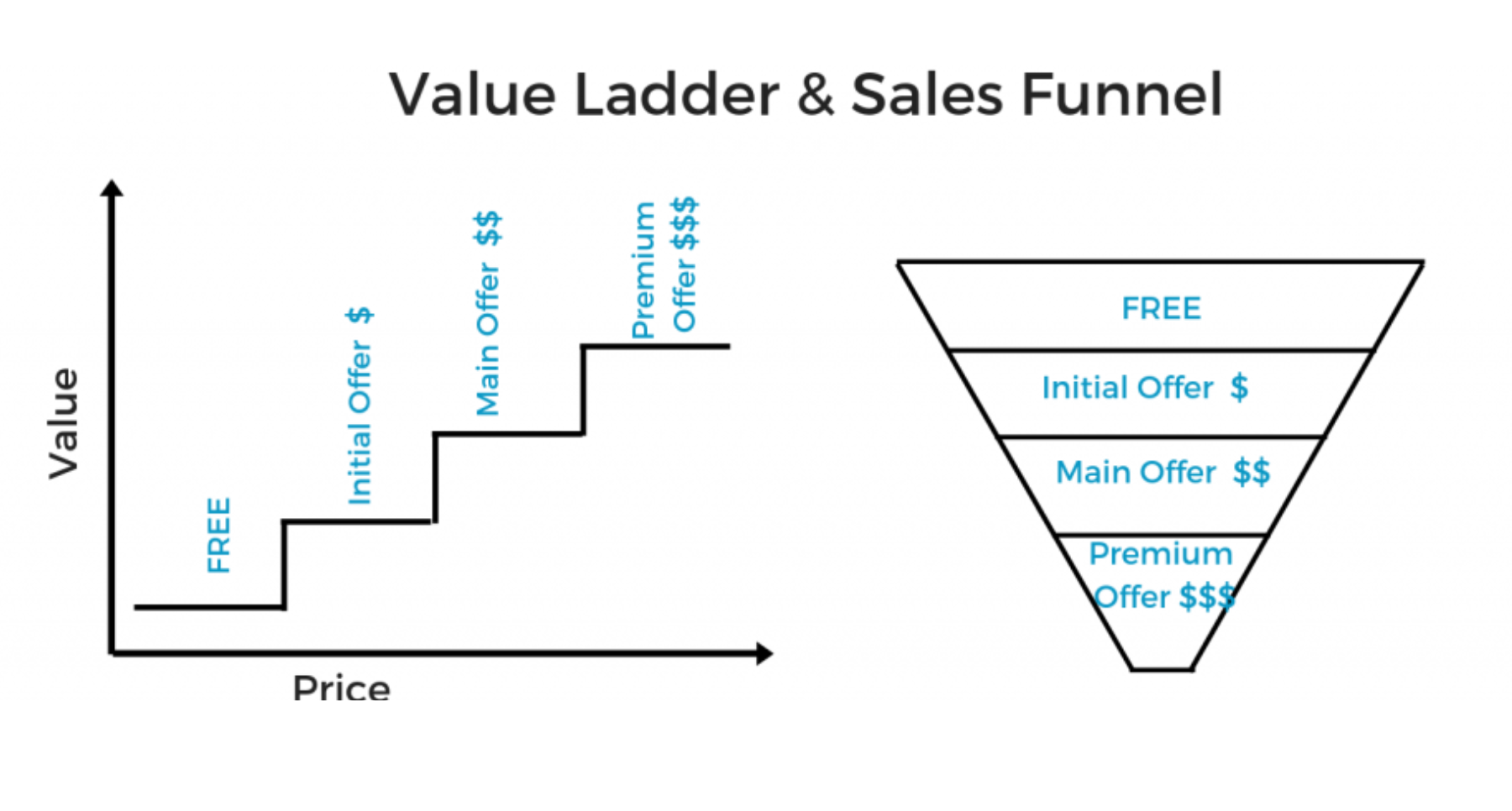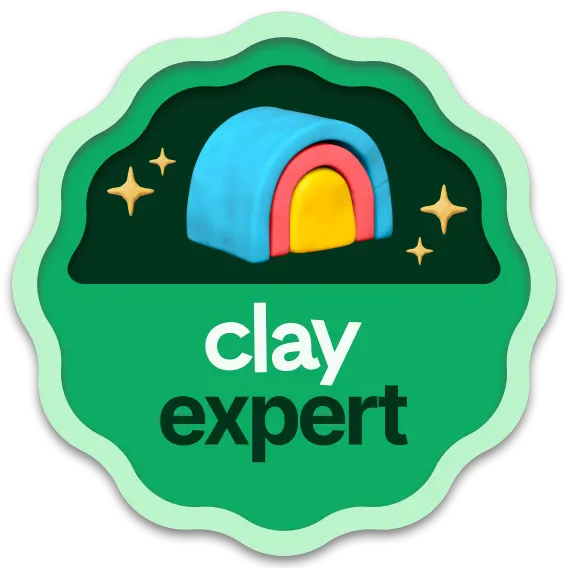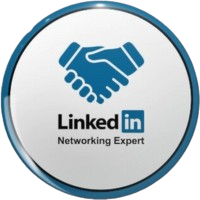
Introduction
Many years ago, when I was working as a sales executive for a digital marketing agency called LikeLeads, I was already implementing a “value-offer” strategy, but I just didn’t know that yet. I had realized that, instead of asking the prospect for a meeting in my cold e-mails, I would get a much higher meeting scheduling ratio if I started offering a “free consultancy service” with our team of marketing experts. This consultancy, of course, could only happen if we scheduled a meeting.
During that time, I also started leveraging job listings as indicators of buying intent when identifying potential clients. My approach involved compiling lists of companies with open roles in their marketing departments. At LikeLeads, our core services included content marketing, media relations, and press release distribution. Therefore, my strategy centered on targeting companies that were increasing their marketing investments and actively hiring for content creation positions. If a company was recruiting for such roles, it signaled a potential need for our services. Of course, back then, I had to manually search through job listings as there was no AI to help me out.
This consultative selling approach, which I call “the value-offer”, has since become a cornerstone of modern cold outreach strategies, and many sales professionals are already employing it. While there is an abundance of resources available on this topic, I would like to highlight one particular reference: Brooks Van Norman. He has an insightful 15-minute video on his website that thoroughly explains this strategy, which he calls “the sales assets strategy”, and it’s well worth the time. I will be referencing much of his content throughout this article.
TheValue-Offer Sales Strategy
In today's landscape, prospects are inundated with cold emails such as this one:
“I help [[industry]] companies achieve [[these results]]. I wanted to learn how you handle [[things your company handles]] at {{company}} and show you what we’re working on. Are you available for a brief call at [[time options]]?”
The issue with this approach is that it asks for value from the prospect (e.g., half an hour of their time) without giving any value in return. To stand out and succeed in this environment, we would have to: (1) present stronger case studies, (2) craft better personalized opening lines, and (3) increase outreach volume. No wonder why the reply rate for this kind of cold e-mail copies is just between 1 to 3%. And for this reason, for this strategy to work, we would have to send a thousand e-mails per day and which depending on your TAM and ICP it is not a viable option (I will explain better later on).
As Brooks explains, for a prospect to decide to hire you and become your client, he has to answer two questions: (1) Can I trust you?, and (2) Can you actually help me?
And, so, even it the lead books the meeting, he still doesn’t know anything about you, and you still have to answer those two questions for him. What end up happening is that, when you book a meeting using an approach like this, you will create some unfortunate side effects of having uneducated prospects in our pipeline:
- A lot of tire kickers. People just aren't serious because they just don't really know exactly how we can help them.
- A lot of free riders, that know they are not going to hire you but want to schedule a meeting to see what they will be able to learn from you for free.
- High “no show” rates on these booked meetings.
- And a longer sales cycle, since people will still have to do a lot of research about you after the meeting, and usually people end up not doing that. They forget, they are busy, they just have other priorities at the moment.
A more effective strategy, therefore, leverages the principles of the "value ladder" concept, reversing the traditional sales process. Instead of immediately asking for a meeting or a call, the approach begins by providing value to the prospect before requesting anything in return. This could include offering a valuable resource such as a video, PDF, or other content that aligns with their needs.

The process starts with seeking permission to share this “value offer” in the initial email rather than requesting a meeting. By doing so, the likelihood of receiving a response increases significantly, which is the primary goal for the moment: just to get a reply.
It’s also worth noting that generating positive replies from cold outreach signals email service providers that your communications are not spam. Modern AI-driven email filters are really good at identifying spam-like behavior and can reroute future emails to the promotions tab.
Once a reply is received, the next step is to deliver the promised content and transition the prospect into a warm lead nurturing sequence. Only now, our goal will be to schedule the discovery meeting.
Let’s take a closer look on each of those e-mail sequences.
The Cold Sequence
The goal is to request the prospect’s permission to share a unique, personalized, and valuable sales asset – which we will call “the value offer”. The most traditional examples would be the type of content already used as lead magnets for inbound campaigns (case studies; testimonials; educational; client interviews; tutorials; product demos, video sales letter; point of view; market research; templates; etc).
These assets, however, are not personalized. A more effective approach would be to provide tailored documents, study, or data specifically relevant to the prospect’s company (see example below in the case study for a digital marketing agency). Another interesting approach would be to give an actual service for free, following the idea of the trial mode for SaaS companies. All consulting services can, in some way, provide an initial basic “consulting service” for free – like the free digital marketing consulting with SEO experts for example, that I mention in the example below.
It has to be scalable
In some cases, depending on your business model or the product you offer, this approach is just not possible. Lets get as an example - FormulaXR, the last company I’ve worked. They have an immersive training software (in AR/VR) for the 4.0 industry and, for the implementation of the training procedures, they have to implement a 10-thousand-dollar Proof-of-Concept project, where they have to model the client’s equipment in 3D and create a step by step instructions on how to operate it. It is, therefore, impractical to give something for free if you have a business model like this, and there is also not much you can give as a digital magnet (that is closely related to your business).
In that case, it may be necessary to adjust the call-to-action (CTA), and the value offer would be a proper way to present your product. Instead of requesting a meeting or call, a softer approach could be used, such as asking if they’d like to receive a quick one-minute video showcasing your product or providing a case study aligned with your prospect’s industry and pain. Again, just trying to get that positive reply.
The Video Sales Letter
A sales asset that is very useful for this strategy is the “video sales letter”: A video designed to persuade and convert viewers into customers, much like a traditional written sales letter. It uses engaging visuals, audio, and a structured format to present a sales pitch, typically highlighting a problem, offering a solution (the product or service), and including a clear call to action.
According to 2024 data from Wyzowl, salespeople and marketers everywhere are utilizing video as their secret weapon more than ever. 30% of sales pros have been using videos to sell content and 87% of marketers have admitted that video has directly increased sales.
The app Sendspark allows us to send personalized videos at scale. You record just one video with a placeholder for your viewer’s first name and, with the help of AI, it sends personalized videos for all your contacts, each uniquely tailored with their name and a custom website background.
in the e-mail copy below, Ericson Dalusong asks if he can send a loom video to the prospect, instead of asking for a meeting. He got a 17% reply rate with this e-mail, instead of the 2-3% common average for cold e-mails.
.png)
The Nurturing Sequence
Once the lead responds, we will provide them with the promised sales asset and enroll them in a nurturing sequence with the end goal of scheduling a meeting. Through these nurturing emails, we will continue to share valuable information about our product or service. At this stage, we can send the same content to all prospects (no need for personalization here), utilizing the "lead magnets" previously mentioned, such as case studies, testimonials, and demo videos.
The primary objective is to build rapport and continue educating the lead about our offerings and our company. It is all about building trust, credibility, and differentiating from everybody else. The more informed our leads are, the higher our conversion rates will be, and the sales cycle will be significantly shortened. Think of these emails as a highly targeted retargeting effort or a "newsletter" that functions as a salesperson.
Back to Brooks explanation, the goal with a nurturing sequence is to:
- Making them read and watch your sales assets and content, while constantly following-up and making the prospect remember us.
- Make it easy to schedule a call after they become educated about you and your solution.
- Help them overcome their limiting beliefs that keep them from achieving the results they want, and of course, which means keeps them away from becoming a customer of yours.
Our sales cycles will be, therefore, much shorter because the time delta between when you book calls and when people become customers doesn't require people to go and figure out who you are. You already did that at the beginning of the sales process. You will also get higher conversion rates. Meetings booking rates with this process, in many cases achieve a 5% rate instead of the 0.5% of the old approach.
Consultative Selling as a trend
This approach is also aligned with modern consumers’ behaviors. A Hubspot Sales Trends Report emphasizes that:
“Sales reps used to be able to close deals by simply walking their prospects through the many features and benefits of their product — but today, the role of the sales rep is changing. Since consumers have the ability to research the tools they’re considering — and 96% of them do so before speaking to any rep from a company — they already know why your tool is worth considering. When a prospect is talking to a rep, it’s because they’ve already moved past the phase where they want to learn the basics about the tool — they want to know exactly how a tool will benefit them. They want tailored use cases for their industries and circumstances, and they want expert-level consultation about the ROI your tool brings to users with similar needs.”
Sales Assets Suggestion for the Nurturing Sequence
I propose a nurturing sequence consisting of four additional automated emails (making a total of five emails, including the value offer delivery e-mail), all designed to keep providing educational content about your company:
- Email 1: 1st value-offer devilery and, if possible, offer a 2nd (ex: free consultancy).
- Email 2: case study with a client in the same industry as the prospect.
- Email 3: video sales letter or a Venn diagram.
- Email 4: testimonials – a video interview with a client.
- Email 5: A follow-up email proposing a meeting.
Be always available for a call schedulling: Although we do not ask for a meeting until the last e-mail of the sequence, we can (and have to) always include a link to your calendar in your email signature so the lead can schedule a call at their convenience.
The Venn Diagram
The Venn Diagram is an idea that I got from the Justin Michael Method. It is a powerful visual tool to showcase your company without having to write anything. Just by opening the e-mail we already get the message.
.png)
A quick note about workflow automations: The process of transferring the prospect from the first to the second sequence can be fully automated. When a lead responds to our messages, it acts as a trigger to change the “lead status” from “cold” to “warm”, and this change in the lead status will trigger this lead to automatically enroll them in the nurturing sequence.
Case Study: A Value-Offer Strategy for Digital Marketing Agencies
A good “value offer” for a Digital Marketing agency would be, for example, a SEMrush SEO report, which includes analytics on their website's performance, key keyword rankings, and comparisons with competitors. If the prospected company does not have access to SEMrush yet, it is very likely that they will accept the offer. It is also a personalized asset – it is made specifically for them.
In the image below, follows a copy example for both the first e-mail of the sequence, where we offer this sales asset to the prospect, and the reply e-mail, where we deliver this offer and propose a complimentary consultation with our team of marketing experts.
.png)
Defining the right outreach strategy
There are three different approaches for the outbound outreach strategy:
A high-volume, automated cold e-mail sequence.
Ideal when you have a business model where some key characteristics apply: (1) Your ICP category has a huge TAM (total available market); (2) You have a low complexity sales process (your product is already known by the market or doesn’t demand much explanation for you pain-solution fit); and (3) You have a low average sales ticket.
This approach represents a "high-volume" strategy, as it allows us to send up to 1,000 emails per day by leveraging the outlined email deliverability techniques, primarily using 20 separate email accounts across 10 unique domains.
A low-volume, personalized omnichannel sequence.
Contact made through both e-mail and LinkedIn. Cold Calls can also be applied. Used for the opposite circumstances, when we need an Account-Based Marketing (ABM) approach: (1) your ICP is a very specific niche (and therefore with a small TAM); (2) complex sales cycles; and (3) high average sales ticket. In this strategy, cold calls can also be applied. An interesting approach for this strategy would be Sam Nelson’s Agoge Sequence.
This strategy is classified as "low-volume" due to LinkedIn's restrictions. Sending automated messages in large quantities on LinkedIn is not feasible, as it poses a risk of being flagged or banned by the platform.
A mid-volume, automated LinkedIn sequence.
It can be used as a “plus” outreach effort that can be aligned with both strategies above, if your ICP has a strong presence on LinkedIn. We have to keep in mind that a lot of people will not open, or even receive our cold e-mails, but are very active on LinkedIn. It is very important, though, to focus on people that comply with some criteria that indicates that they actually access the platform form time to time: (1) have a picture on their LinkedIn profile; (2) have more than 200 connections; and (3) have posted something in the last 6 months.
This is a “mid-volume” strategy. Despite adhering to the same LinkedIn restrictions, we can leverage a tool that allows us to auto-rotate LinkedIn senders: connect multiple LinkedIn accounts and automatically rotate message sending between them.
Let’s see some examples for each of these Strategies:
Only-A-Click - The high-volume cold e-mail strategy.
Only-A-Click is a digital marketing agency that focuses on small businesses, such as gyms, hair salons, restaurants and so forth. Therefore, it doesn’t make any sense for them to do a personalized omnichannel campaign. Their ICP are not on LinkedIn and sometimes doesn’t even have a website. The strategy they have adopted, thus, is a cold e-mail campaign sending more than a thousand e-mails per day to any valid address they can find.
These are examples of some real e-mails templates they send:
.png)
Now, here is the catch. Notice that it looks like they are using the “consultative selling” approach, since they are asking the prospect permission to send more details about their product – pricing, past work and success stories. But what they actually do is that, instead of sending the promised “value offer”, they hire an army of SDRs from South America, at much lower wages, and have them making cold calls to these prospects, with an average of 80 calls a day, with the sole mission of scheduling a meeting.
As I have already explained in this article, I believe this “deceptive” strategy is a mistake. They would get much better conversion rates if they actually stick to their plan and send the promised sales assets.
Azzera and TrustFlight – The low-volume omnichannel approach.
Azzera and TrustFlight are both software providers for the aviation industry. The former is for sustainability management and the latter for operating and maintenance automation. Their ICP is, therefore, commercial airlines. It is a very specific niche with very few companies around the world, therefore they have to do a very personalized and omnichannel outbound strategy and, in this case, cold calls are mandatory.
In their case, since they are a SaaS, it is easy to offer a free trial. But they can also go deep in Account-Based Marketing (ABM) strategies and offer a very personalized study on how that specific airline is performing in regards to their carbon foot print, and how the Azzera’s software can help them improve their accountability towards the global environment. Thay can also send, in the nurturing sequence, some very detailed case studies or video interviews with other airline’s CEOs as social prof. There is no limit to the efforts you can make to present your case when you have such a limited TAM (total available market).
FormulaXR – A diverse mix of outreach strategies.
Quoting FormulaXR once again, the immersive training software (in AR/VR), they have a very broad IPC: big size industries, with a headcount of at least 10.000 employees. Even more important, they have a a broad range of departments inside each company in which their software can be applied: engineering, quality assurance, innovation, safety procedures, and training. During my tenure there I have developed, therefore, outreach strategies for all 3 outbound channels: e-mail only, LinkedIn only, and the omnichannel approach with LinkedIn, e-mail and cold calling.
For the high-volume cold e-mail sequence, I would do two types of prospection:
- company search, building lists of companies inside a specific industry (for example, automotive or heavy machinery industries); and
- people search, building lists based on the persona job titles and not companies (for example, head of engineering or head of quality assurance, inside any industry, as long as the company had a headcount of 10k or more).
I would also run a mid-volume LinkedIn-only outreach campaign using the same parameters informed above, as a complimentary outreach effort. Now, there were some companies that, for some reason, showed greater than average potential to become our clients. For those companies we would make a very personalized Account-Based Marketing approach, utilizing the omnichannel strategy mentioned above, based on the Agoge sequence. Here are some clarifying examples:
- Embraer, the Brazilian jet airplane manufacturer was our client. Therefore, we would make a personalized campaign for its suppliers, using the Embraer case study as social proof;
- Our biggest client (in Life-Time Value) was a company from the medical equipment industry (Becton Dickinson). Thus, we would create an omnichannel campaign for other lookalikes in this industry.
Please read this article for a very detailed account of all my ABM strategies during my tenure at FormulaXR.







